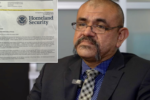In a rare but heartening update from the conservation world, wildlife officials have reported a significant rise in the populations of several endangered species. This milestone, attributed to decades of conservation efforts, stricter enforcement of wildlife protection laws, and community-led initiatives, offers hope for reversing the tide of biodiversity loss.
The announcement, made by the U.S. Fish and Wildlife Service and corroborated by international bodies, has sparked global interest in conservation success stories. Species once teetering on the brink of extinction, such as the giant panda, sea turtles, and certain tiger subspecies, are showing promising signs of recovery.
Conservation Policies Bear Fruit
Government-led conservation programs have played a crucial role in these successes. Policies such as habitat restoration, anti-poaching initiatives, and the establishment of wildlife corridors have been pivotal. For instance, in India, the National Tiger Conservation Authority reported that tiger populations have surged by over 33% in the past decade, thanks to dedicated reserves and improved monitoring.
Similarly, marine species like sea turtles have benefited from stricter regulations on fishing practices. The NOAA Fisheries Office of Protected Resources has enforced measures to minimize bycatch, leading to the resurgence of loggerhead and green sea turtles in coastal waters.
The return of these species underscores the impact of coordinated global efforts such as the Convention on Biological Diversity and the Paris Agreement, which emphasize ecosystem preservation as a climate change mitigation strategy.
Local Communities as Stewards of Change
While government policies are essential, the role of local communities cannot be overstated. Indigenous groups and grassroots organizations have emerged as guardians of biodiversity, working tirelessly to protect their natural heritage.
In Africa, community-led anti-poaching patrols have drastically reduced the illegal hunting of rhinoceroses and elephants. Supported by initiatives such as the African Wildlife Foundation, local populations have become integral to wildlife monitoring, ensuring animals can roam freely and safely.
Closer to home, U.S. state parks and wildlife sanctuaries have engaged local volunteers in reforestation projects and ecological surveys, fostering a shared responsibility for the environment.
Technological Advances in Conservation
Technology has also revolutionized conservation efforts, offering tools to monitor and protect endangered species more effectively. Wildlife officials now employ satellite tracking, drones, and AI-powered camera traps to gather real-time data on animal movements and detect poaching activities.
For example, in Southeast Asia, the use of drones has enabled the tracking of elusive species such as the clouded leopard. Similarly, conservationists in the Amazon rainforest use AI to analyze deforestation patterns, allowing for rapid intervention when illegal logging threatens critical habitats.
These innovations, often funded through partnerships between governments and organizations like the World Wildlife Fund, have brought unprecedented precision to species recovery initiatives.
Success Stories Around the Globe
Several species have become icons of conservation success. The giant panda, for example, has been reclassified from “endangered” to “vulnerable,” thanks to China’s extensive bamboo forest restoration projects. Meanwhile, humpback whale populations in the Atlantic Ocean have rebounded after decades of hunting bans enforced under the International Whaling Commission.
Closer to the Arctic, polar bear populations have shown localized recovery in areas where human-wildlife conflict mitigation measures are in place. These measures, supported by organizations such as the Polar Bears International, involve securing food sources and minimizing human interference.
Such stories demonstrate that even the most vulnerable species can recover if given the opportunity and resources.
Challenges Ahead
Despite these successes, the battle for biodiversity is far from over. Habitat destruction, climate change, and illegal wildlife trade continue to threaten countless species. Conservationists warn that while population increases are encouraging, they are often fragile and require sustained effort to maintain.
“Conservation is a long game,” said Dr. Anne Richards, a biologist with NOAA Fisheries. “We must continue to address the root causes of biodiversity loss while celebrating the progress we’ve made.”
Governments worldwide are being urged to strengthen their commitments to wildlife protection. Programs like the Endangered Species Act in the United States serve as a reminder of what can be achieved when environmental priorities are placed at the forefront.
A Call to Action
The rising numbers of endangered species populations serve as a beacon of hope for a planet facing ecological challenges. They highlight what humanity can achieve through collective effort, innovation, and unwavering commitment to preserving nature’s balance.
However, this progress must inspire further action. Citizens, governments, and organizations alike have a role to play in ensuring these gains are not only maintained but amplified. As wildlife officials emphasize, every action counts—whether it is supporting conservation programs, reducing one’s ecological footprint, or advocating for stronger environmental policies.
In the words of renowned environmentalist Jane Goodall, “What you do makes a difference, and you have to decide what kind of difference you want to make.”
By staying the course, it is possible to envision a future where endangered species are no longer at risk but thriving in the wild, reminding us of the resilience of life on Earth.
Disclaimer – Our team has carefully fact-checked this article to make sure it’s accurate and free from any misinformation. We’re dedicated to keeping our content honest and reliable for our readers.








